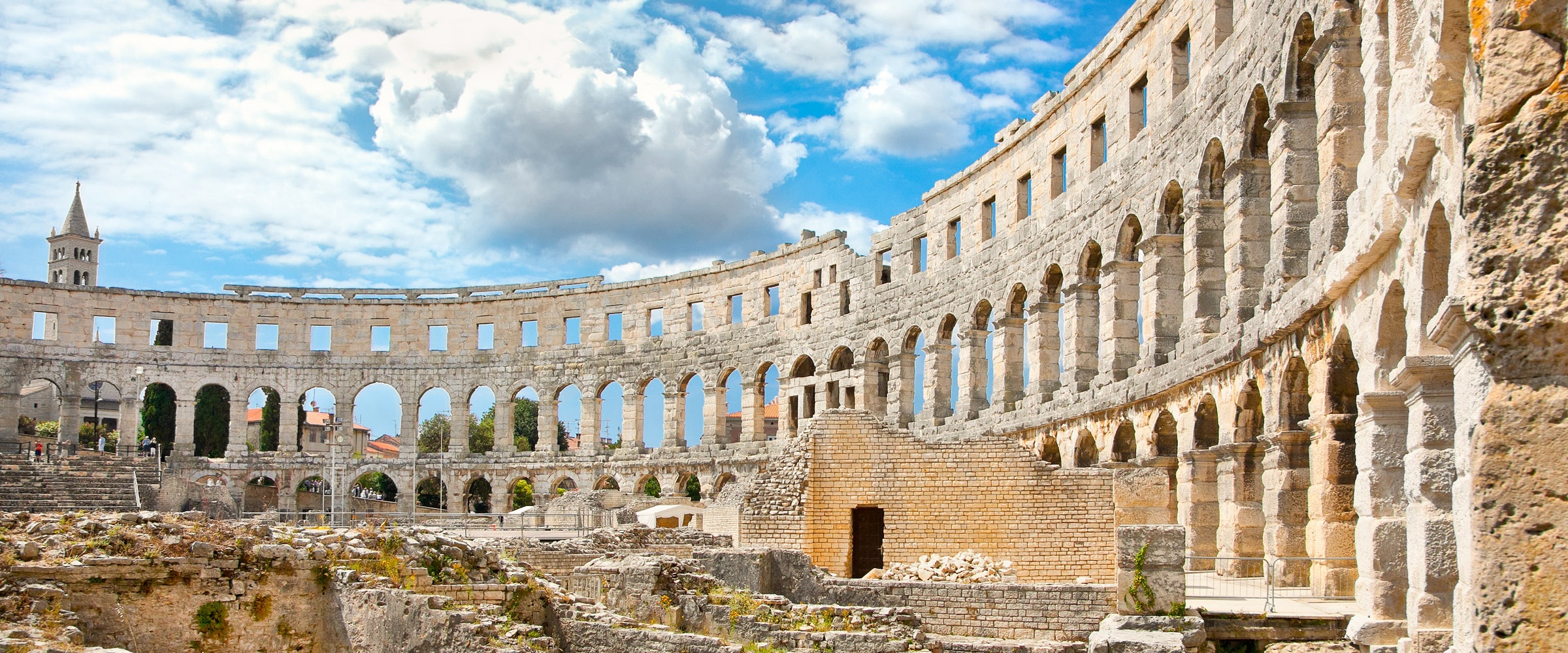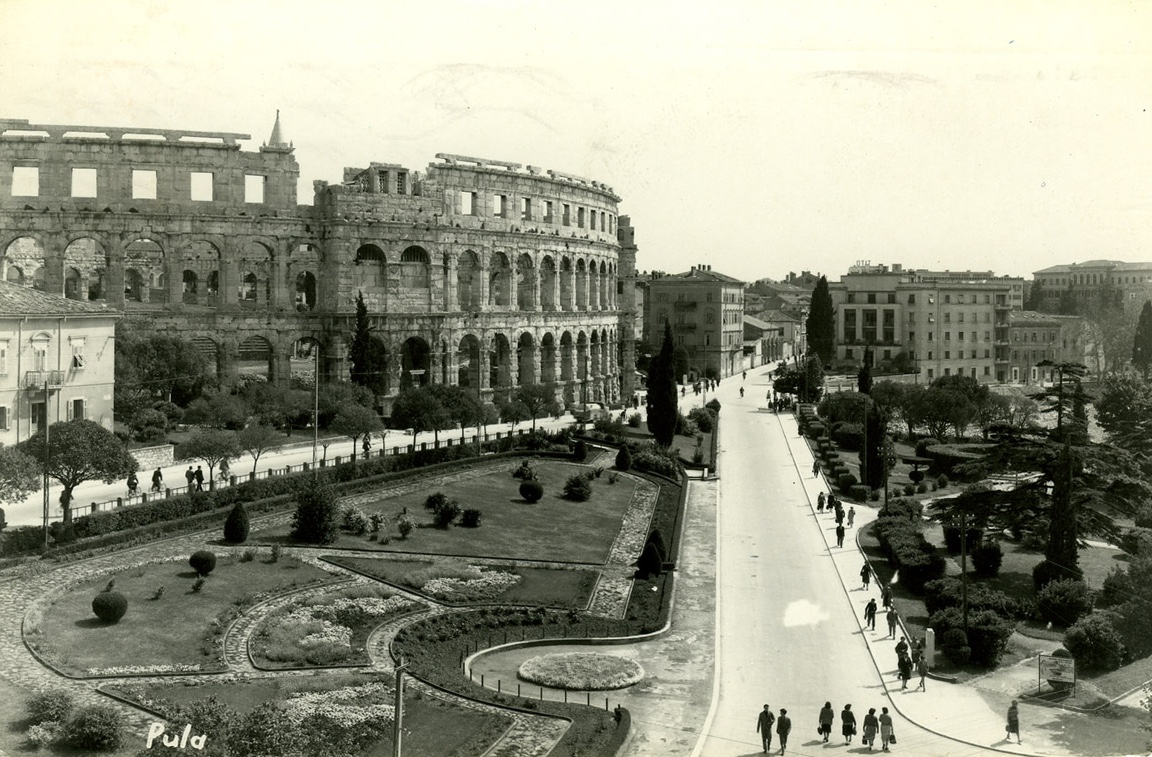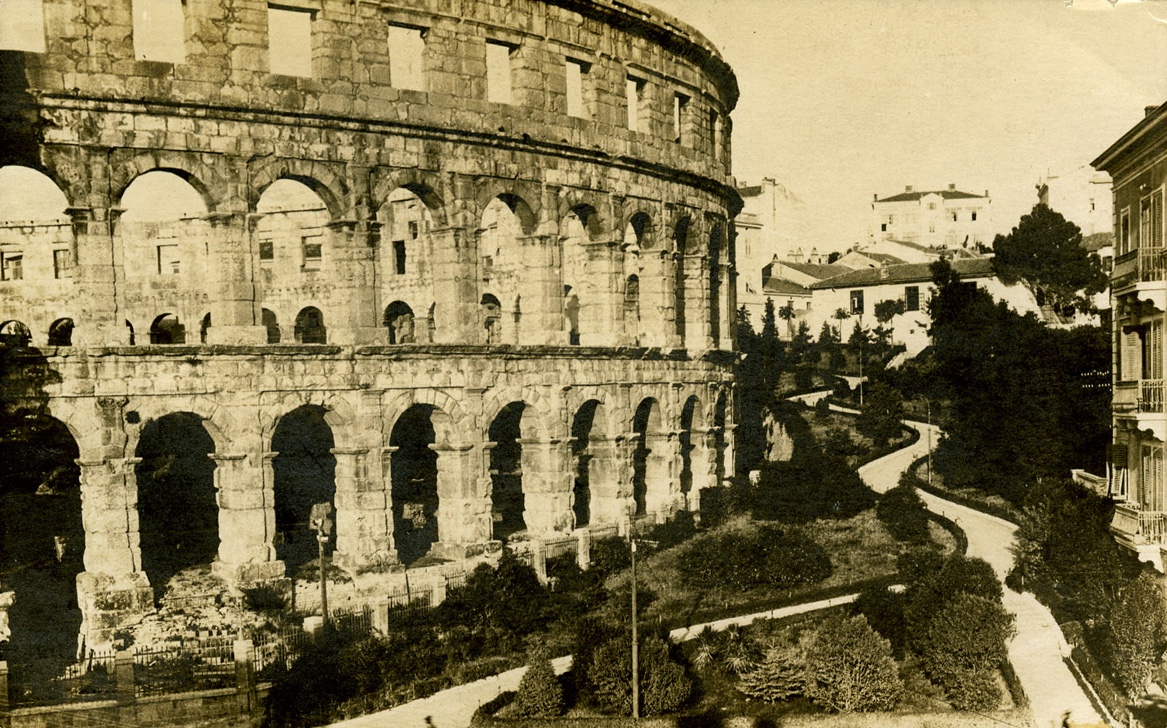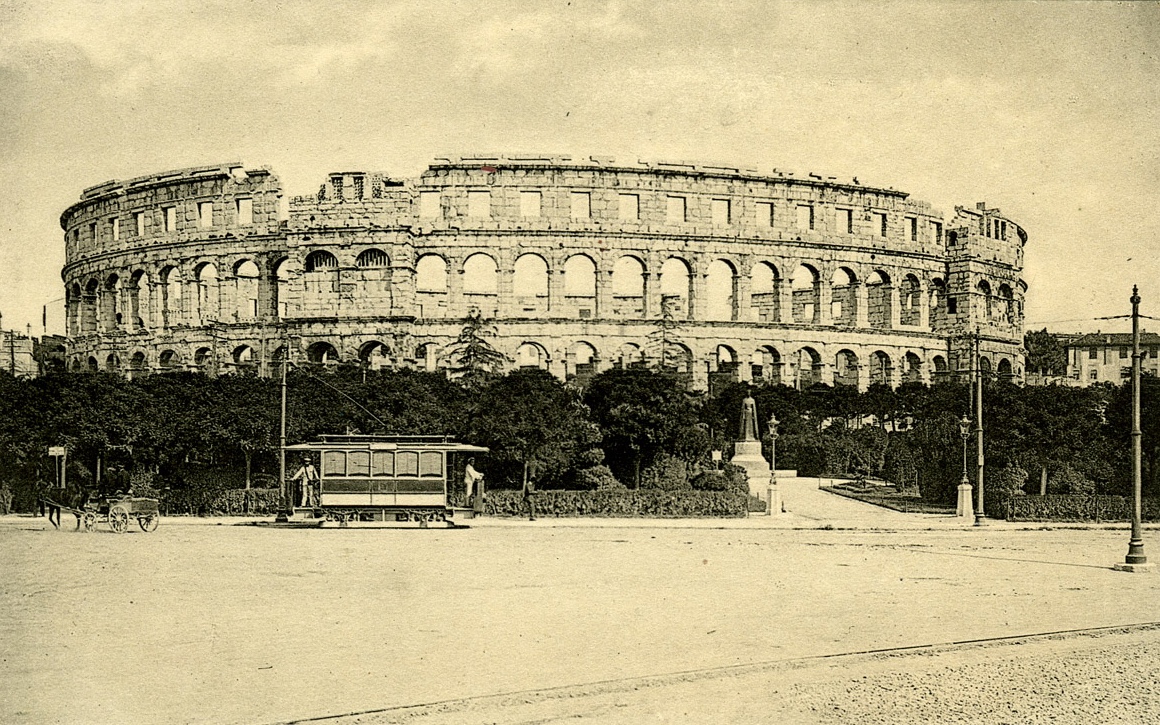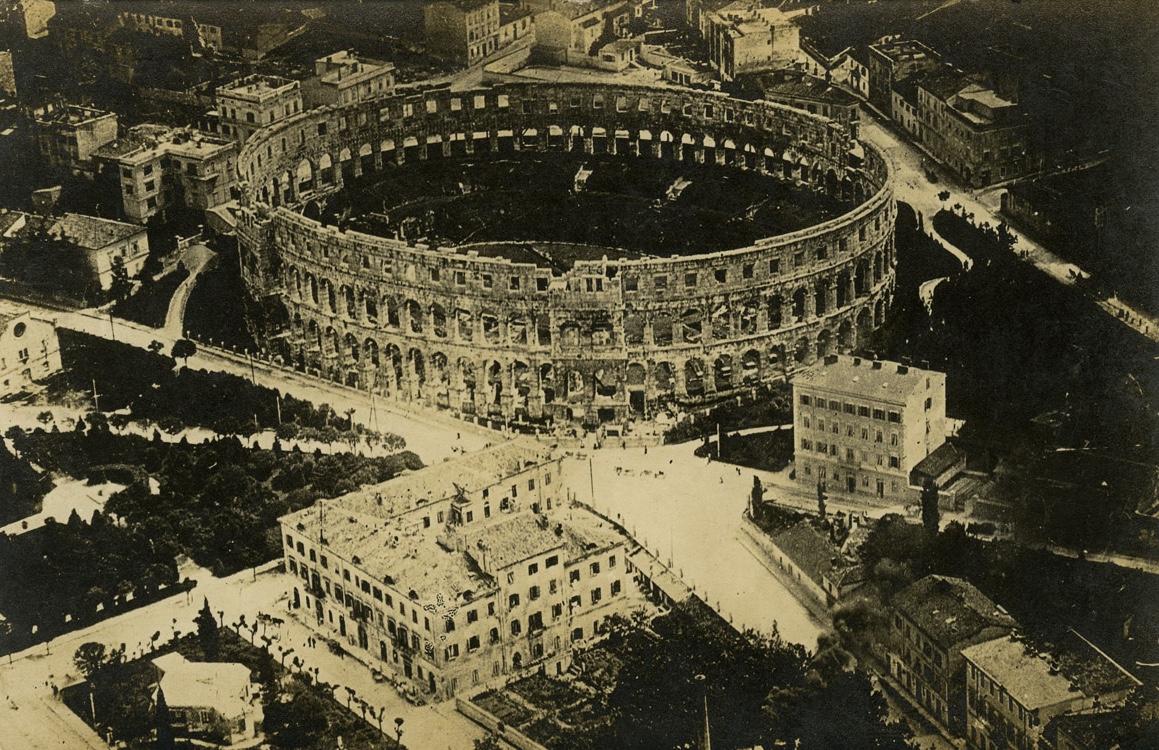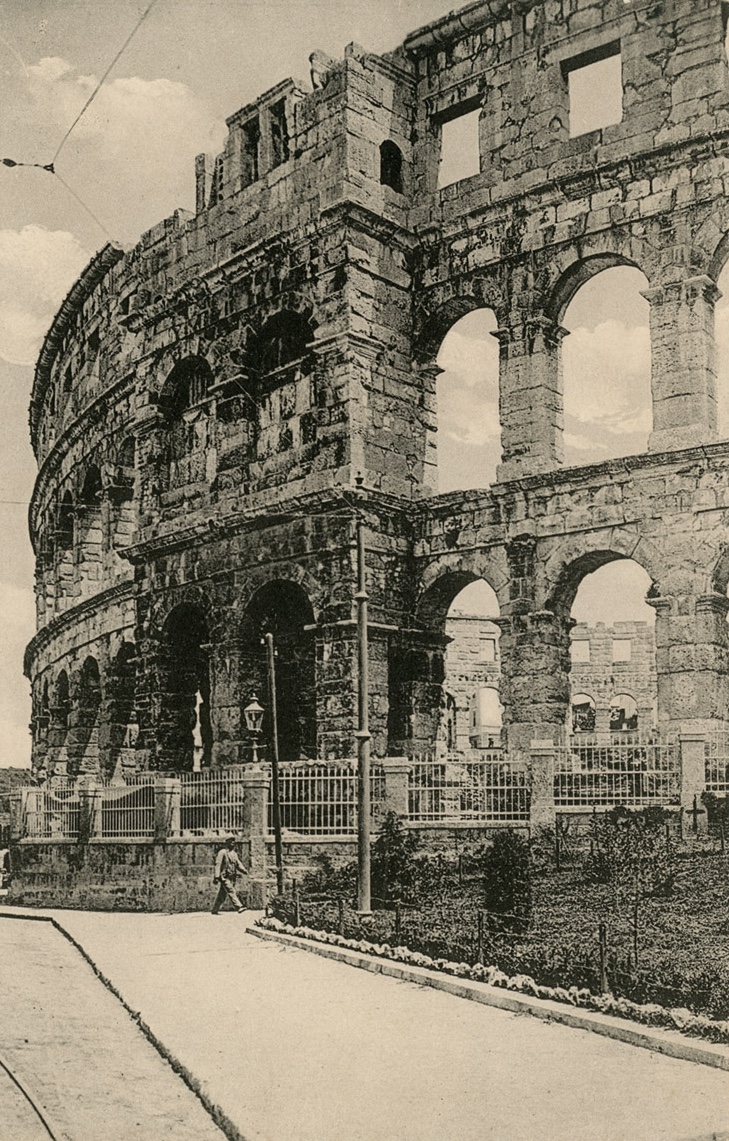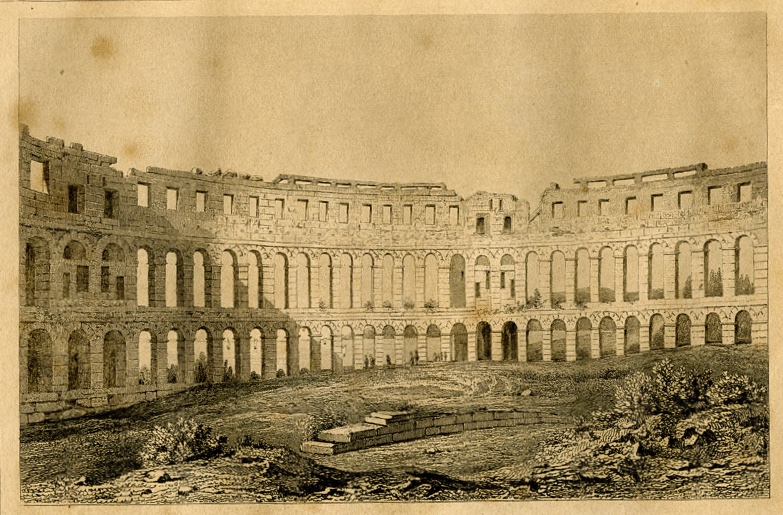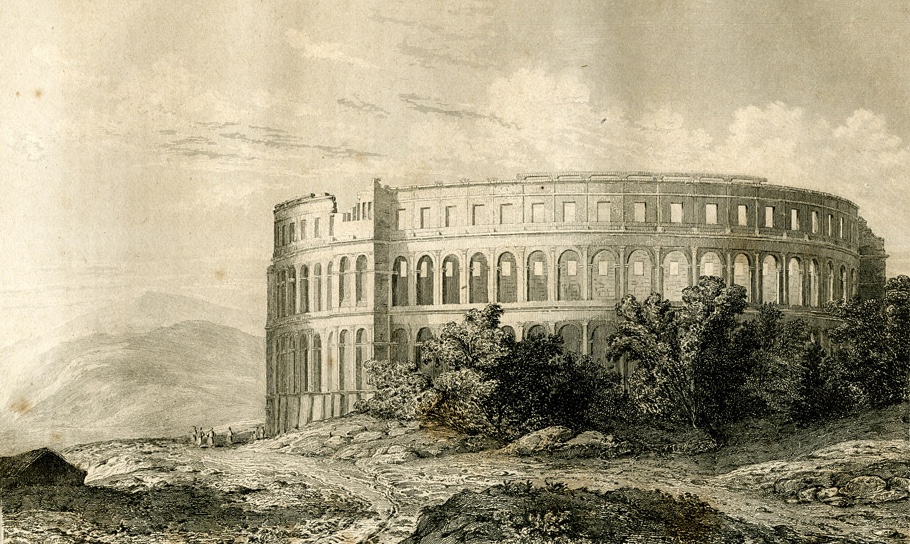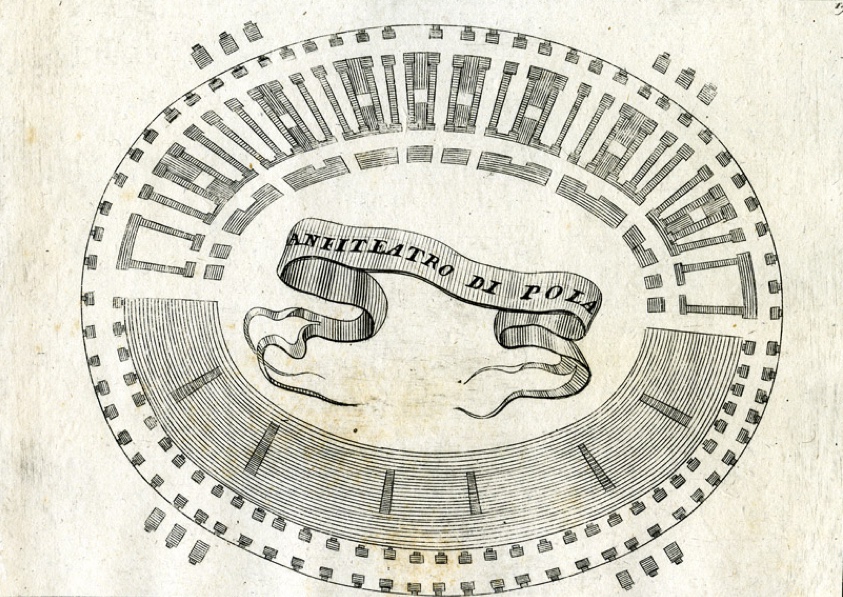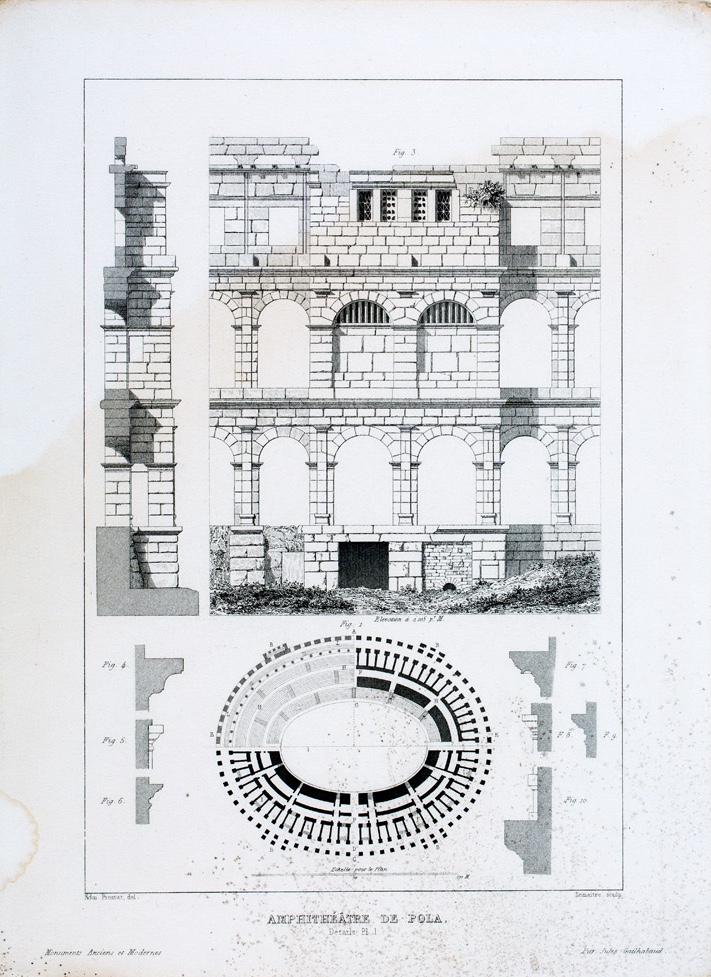Since its construction, the Arena has been used for games and performances for the citizens, but after Christianity became the state religion, Emperor Honorius banned the games by decree in 404. Due to the decree, but also due to the uncertain and turbulent times, the use of the building was significantly reduced.
In the following centuries, the amphitheater lost its social significance and role, and the stone blocks and other parts of its interior were used for the renovation and construction of houses and city walls. In order to save the amphitheater from destruction due to the removal of building materials, the Patriarch of Aquileia between 1260 and 1273 decreed that anyone who removed stone material from the amphitheater had to pay a fine of 100 Byzantine gold coins. However, it was still exposed to demolition and removal of materials, so in 1458 the City Council of Pula banned the demolition and use of materials from monuments.
Over the centuries, the amphitheater was sporadically used to hold fairs, but over time the interior completely collapsed and became overgrown with vegetation, so the area was also used for pasture.
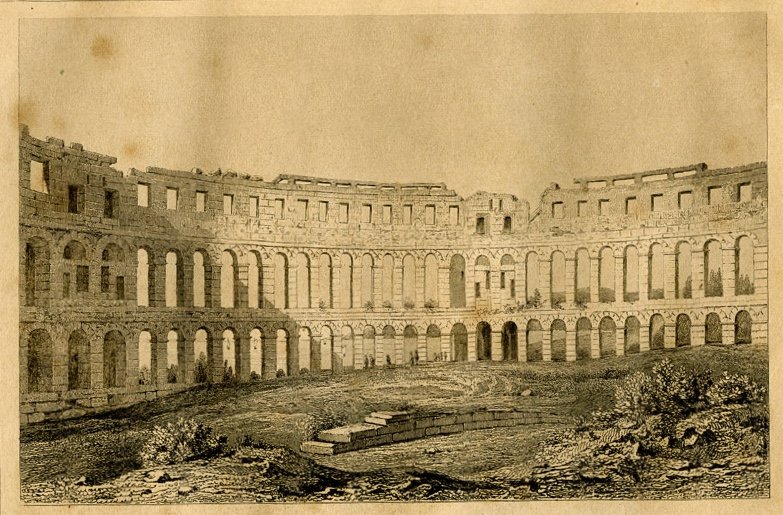
The amphitheater was in great danger in 1583, when the Grand Council of the Venetian Republic decided to dismantle the outer wall of the amphitheater stone by stone and transport it to Venice. Senator Gabriele Emo opposed this decision, and out of gratitude, a stone plaque was built into the northwestern tower of the amphitheater with his family coat of arms and a Latin inscription: "The entire Pula citizenry thanks Gabriele Emo, son of Peter, the excellent and most illustrious Venetian senator, for the eternal existence of the monument, the old city amphitheater, 1583".
The last major wave of destruction of the amphitheater's interior occurred at the beginning of the 18th century, during the laying of the foundations for the bell tower of the Pula Cathedral. More than 70 carved steps of the seats were built into its foundations.
Archaeological research
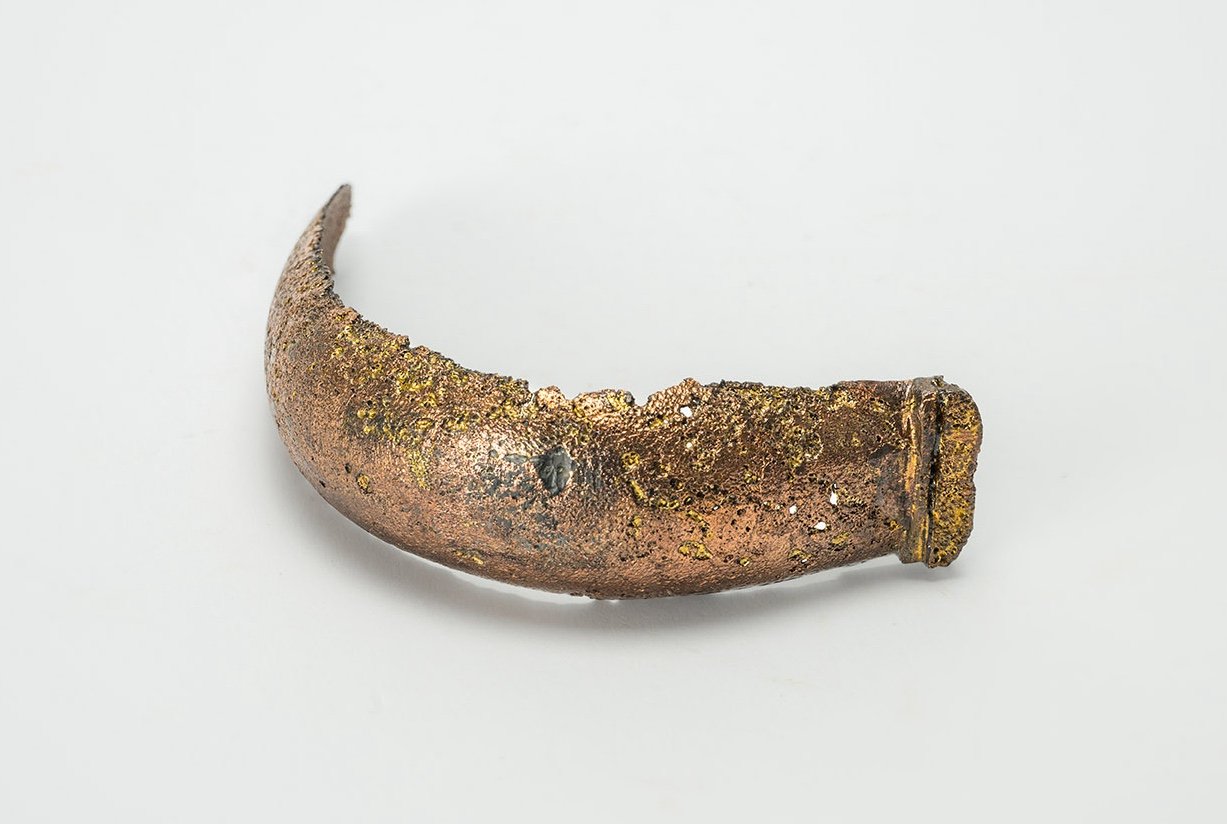
Archaeological research was first carried out, on several occasions, by Gian Rinaldo Cali in the middle of the 18th century, and was briefly continued by Marshal Marmont. During the Austrian rule in Istria, research was started again by the order of Emperor Franz I, led by Pietro Nobile, i.e. Francesco Bruyn and Giovanni Carrara, and at the same time Canonic Pietro Stancovich was working on the amphitheater. At the end of the 19th and the beginning of the 20th century, archaeologist Anton Gnirs was also engaged in research. Along with research, since the beginning of the 19th century, conservation and reconstruction operations have been carried out at the amphitheater.
Repairs
During the Second World War, the amphitheater was fortunately spared from destruction. Every year, minor and major repairs and maintenance of the interior were carried out. The biggest works of the 20th century were those on the part of the ground floor of the western side of the amphitheater between 1985 and 1987. The next extensive works were those on the northwestern tower of the amphitheater, which were completed in 2011.
